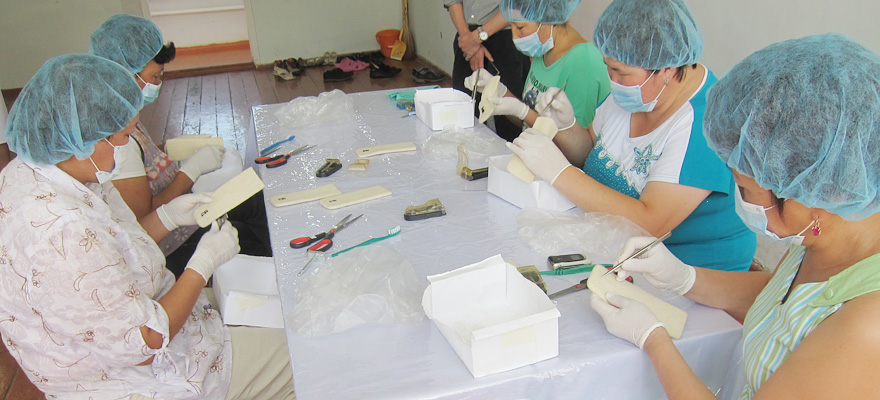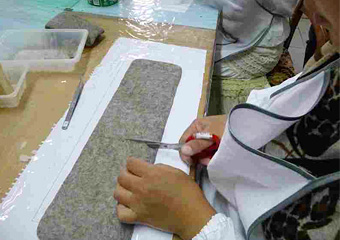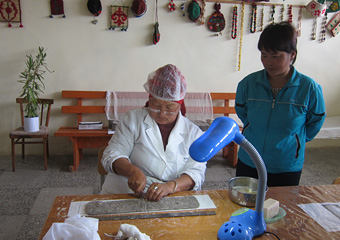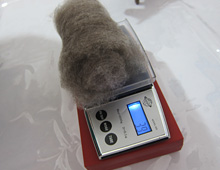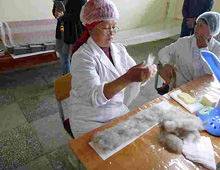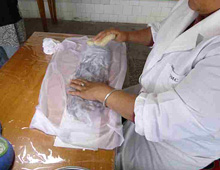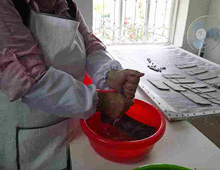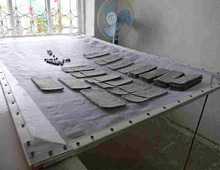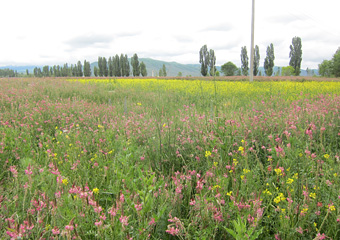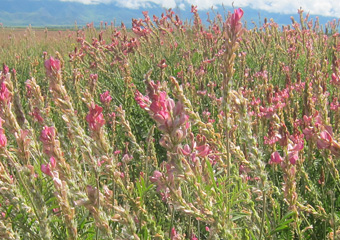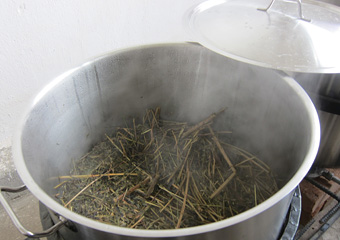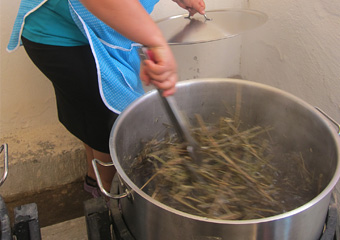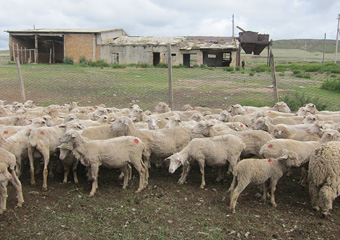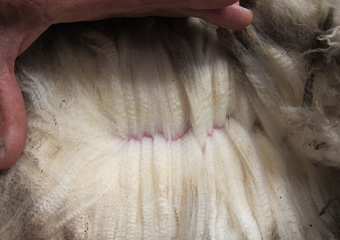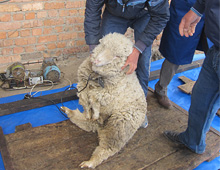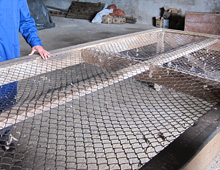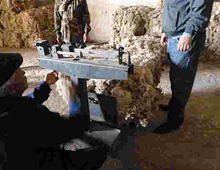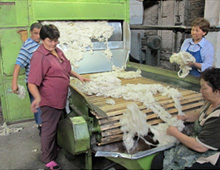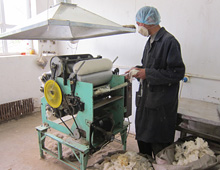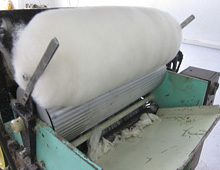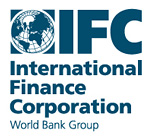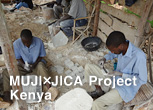#05 Kyrgyz: Progress in the Third Year
Now in the third year from the start, the Kyrgyz project has still been making progress and growing.
In this edition, we would like to report changes found when we visited our production sites in Kyrgyz in 2013.
1. Development of People
During the visit, we were impressed the most with the rapid development of the local staff and producers.
A woman who was a technical leader of the producers in the first year is now playing an active role as the leader to control the office in this project. Another woman successfully became a designer and specialist in vegetable dyeing in three years. When she was explaining things to us, we understood that mastering skills allows her to work with confidence.
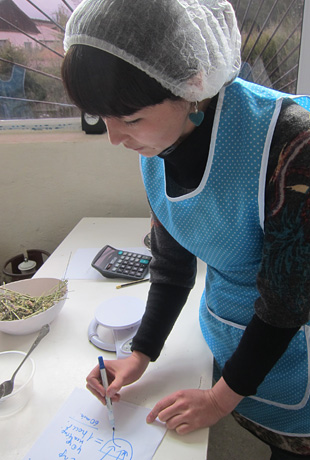 A dyeing specialist is explaining the dyeing process.
A dyeing specialist is explaining the dyeing process.
With strong willingness to contribute to the national and regional development, the office staff asked young people around the region to join the office. Surrounded by good colleagues, everyone seemed to be growing together through the work.
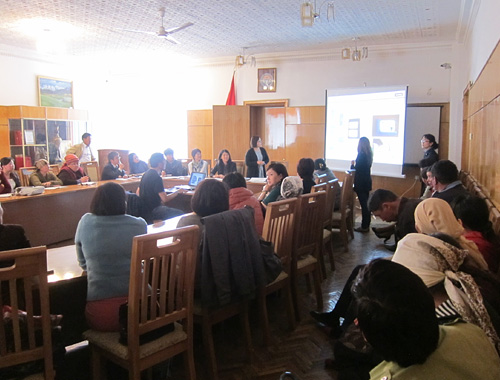 We had a seminar for producers again this year.
We had a seminar for producers again this year.
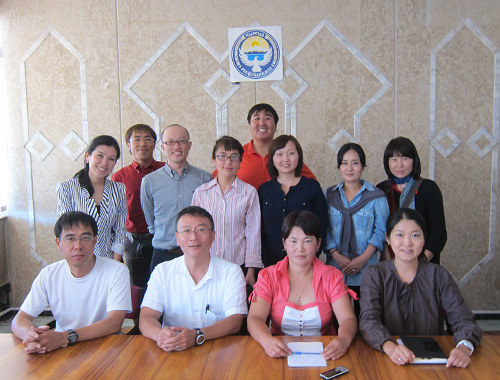
A meeting was also held between the Kyrgyz office, MUJI, and JICA members.
In the meeting, they enthusiastically discussed the future challenges of the project and their dreams.
This year's challenges for those evolving Kyrgyz project members are as follows.
2. Streamlining the Production
During the production process of the pen case, mobile device case, and card case, one product was produced at a time until last year. To streamline the local production this year, members with technical skills developed an efficient method to produce two at a time and forwarded it to all members in production. The secret was creating a unique plastic template that allows for making two products simultaneously in one process.
It is an improvement in the production efficiency through "reviewing the process" that is the wisdom of the local producers. This evolution of production just surprised us. Excellent!
○The production process of the felt case
The production of the felt case starts with weighing the wool for material. Then, the wool is multi-layered on the template and shaped while being moistened with soap water. This shaping process takes long time. The shaped wool is washed more with water before being dried. The end product requires other operations such as removing threads in color similar to that of a hair strand with tweezers, cutting out the possible pilling on the surface with a razor, and scoping out the felt lint in the case with a toothbrush.
Making one product requires a tremendous amount of time and work. With the affection for the products, however, the producers were working patiently while pleasantly chatting with each other.
This process of making two products by cutting a rolled felt with scissors was the key to the production.
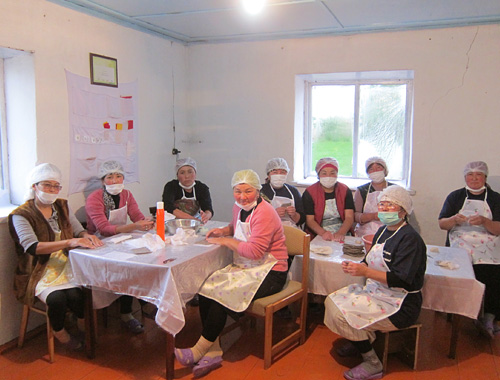
The producers are working while enjoying the chat. They said that this working style greatly helps them improve communication and exchange information.
3. Finishing the End Products
This year, the Kyrgyz members have taken a big step in not only introducing new products but also reviewing the production process. Until last year, newly produced products were shipped to Japan for inspection, packaging, and tag-labeling before being sold in stores. This year's biggest challenge for the members was to finish inspection and packaging of end products for themselves. We advised them how they can prevent any mistakes in a series of processes, including product inspection, packaging, tag-labeling, and shipment.
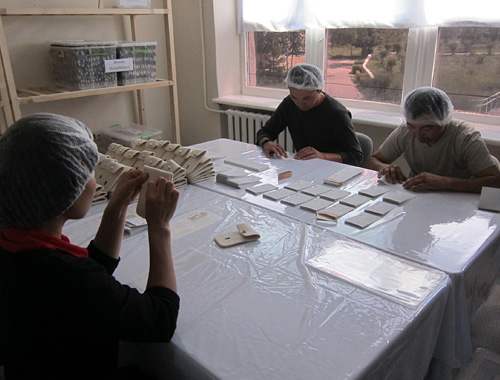 Producers are packing one by one while making sure not to make any mistakes.
Producers are packing one by one while making sure not to make any mistakes.
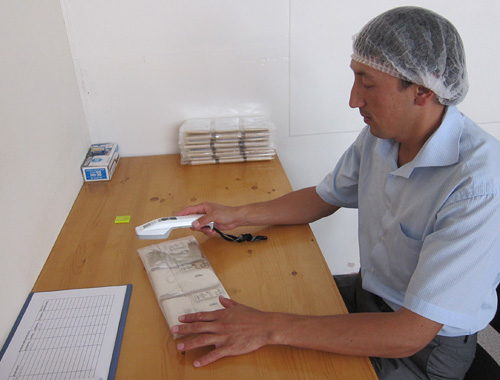 The product is being inspected using the metal detector (to check if any needles are contained)
The product is being inspected using the metal detector (to check if any needles are contained)
Consequently, they are now able to ship the "end products," which hit the store shelves, from Kyrgyz on their own. This proves that their finished products can be proudly sold at any store in any country.
4. Challenge for New Products (Only Available in Japan)
4-1. Animal Ornaments
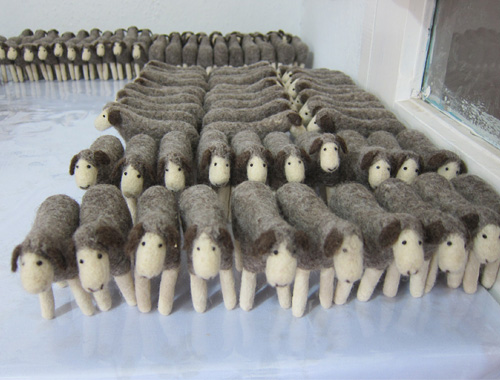
This year, we will launch new animal ornaments of sheep (shown in the above picture) and donkeys, made from felt material having a warm atmosphere.
Sheep and donkeys are most common in Kyrgyz. Each ornament is carefully crafted from felt.
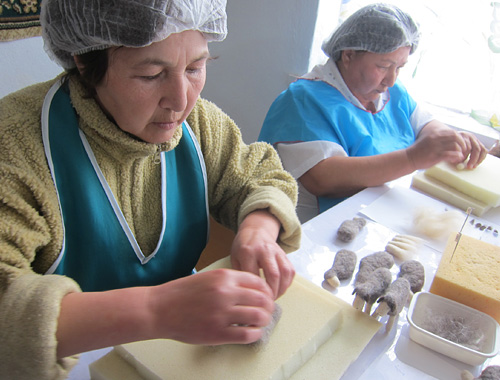
Even an experienced person can take a few hours to make one. Producers are carefully stitching with a needle. (Using the needle punching method)
4-2. Vegetable Dyeing (with Sainfoin)
Sainfoin is a plant that has pink flowers shown in the below picture.
Starting from this year, the Kyrgyz members have started vegetable dyeing using the color of a natural material in Kyrgyz, as well as the undyed color. This plant of sainfoin has many characteristics; its flowers provide honey for bees, it is used as livestock feed after being cropped in July, and planting it improves the soil. Now we have made products using sainfoin that can be seen a lot in Kyrgyz. It is our "choice of a material," which is friendly to the nature.
The above picture is a field of sainfoin. Kyrgyz is blessed with natural beauty.
○At an atelier for vegetable dyeing
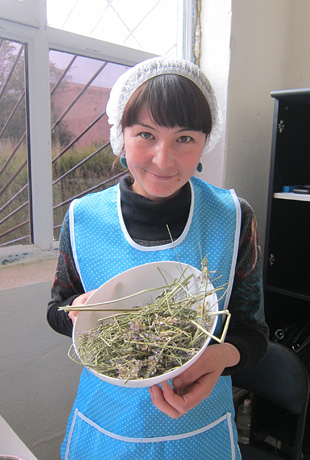 Dried sainfoin for dyeing and a dyeing specialist
Dried sainfoin for dyeing and a dyeing specialist
The large pot is filled with sainfoin for boiling to extract dye. The dyeing process takes about three days, but the dyeing technique has been improved through various experiments.
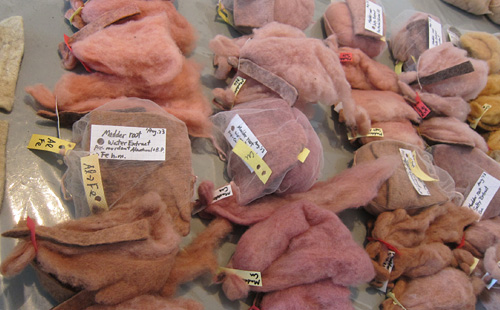 Experimenting vegetable dyeing
Experimenting vegetable dyeing
5. Efforts for Securing the Supply Chain of Materials
In post-socialist Kyrgyz, the various social systems corrupted once. Under such circumstances, even though there are a number of sheep, securing the wool material for felt has not been easy in the past two years. Therefore, the local office members have made every effort to secure the wool for felt in Kyrgyz.
As a result of their effort from last year, they successfully made a partnership with a wool supplier this year and have now started establishing a local framework of how to work with the partnership.
They are likely to be able to not only secure the high-quality wool of Merino sheep, which were brought from Australia in the past, but also ensure the stable traceability of wool.
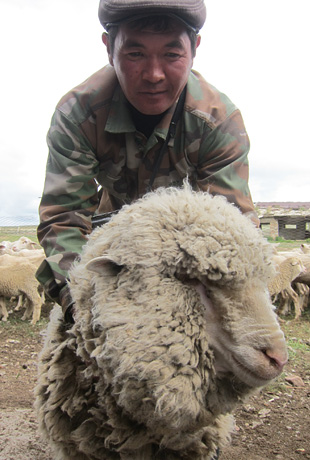 The sheep are being carefully kept by the family of a shepherd.
The sheep are being carefully kept by the family of a shepherd.
In a nomadic country, the sheep are considered as one of the properties.
○The process of making wool for felt
After the wool is sheared from sheep, dirt is removed from the wool. Then, the wool is washed and processed into fluffy cotton called carding.
We would like to emphasize that every product is handmade in all processes from material production, to shaping, to embroidery, and to inspection and packaging. In Kyrgyz, as the members have been steadily making progress, high-quality felt products have been more produced. Through the Kyrgyz project, we found out that developing products is also developing people.
With these many advances, this autumn we will release the following six items as a Christmas gift around the world and animal ornaments and vegetable dyeing items only in Japan. We hope you look forward to them.
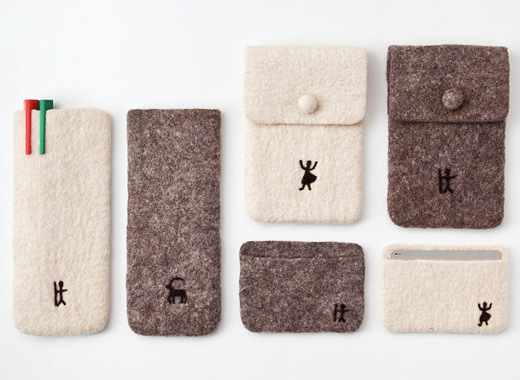
The pen stand, mobile device case, and card case will be available in 2013 (worldwide)
This column has been written by a MUJI project member with the cooperation of JICA Kyrgyz.
